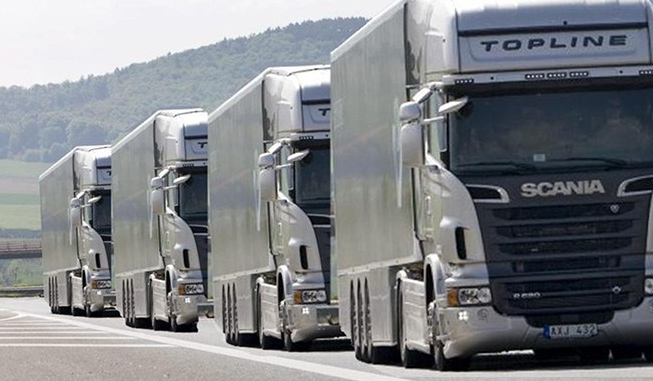The National Infrastructure Commission has been consulting on the intended National Infrastructure Assessment. One question concerns what changes to the design and use of the road would be needed to maximise the opportunities from connected and autonomous vehicles on both urban and inter-urban roads; and how could these changes be brought about.
Autonomous vehicles (AVs) are being developed by established car manufacturers and new technology companies. It seems unlikely that there will be much impact on road use until they become fully driverless, when there will be two main consequences.
First, for shared use vehicles such as taxis, the cost of the driver will be eliminated. This will open opportunities for services in the current gap between high capacity, low fare public transport and low capacity, high fare taxis. A variety of door-to-door mobility services using cars or minibuses will draw people from conventional public transport but also lessen the attractions of individual car ownership in urban areas.
Second, individually owned AVs will be capable of travelling unoccupied, for instance returning to base after dropping a passenger, or ‘parking on the move’ by circling the block while the owner is doing business. Such unoccupied trips would add to traffic and may need to be regulated in areas prone to congestion, to give priority to occupied vehicles.
As regards the impact of AVs on the capacity of the road network, the above consequences would be expected to increase demand and thus congestion. The question then is the scope for increasing capacity through connected autonomous vehicles (CAVs) operating with shorter headways, with or without drivers available for some tasks.
Trials are planned of platoons of freight vehicles, the main benefit being fuel saving from reduced air resistance. There will be drivers for each vehicle who will be trained and required to operate with a very short headway. However, the generality of drivers of AVs will be able to choose the gap to the vehicle in front. It is not clear why, without an incentive, they would choose a gap smaller than that with which they are comfortable, which may not be much different from current headways.
Accordingly, to increase road capacity by reducing headway there would need to be some incentive that would impact on individual drivers. This might be a road user charging regime that charged on the basis of the length of carriageway effectively occupied. However, drivers willing to ‘tailgate’ would pay less than those of a more cautious disposition, which would raise a question of public acceptability.
Another kind of incentive to reduce headway would be dedicated lanes that are less congested and faster flowing than other lanes, analogous to High Occupancy Vehicle lanes on US freeways. Short headways would need to be enforced. A faster lane for CAVs would need to be the outer lane, requiring vehicles to manoeuvre prior to leaving at a junction.
There would need to be acceptable incentives for drivers to reduce headways if manufacturers are to go beyond equipping vehicles with the existing adaptive cruise control. Manufacturers will be responsible for the safe functioning of AVs. Adding vehicle-to-vehicle or vehicle-to-infrastructure connectivity to reduce headway would exacerbate this responsibility by introducing functionality that depends on that of other manufacturers and suppliers and that increases the risk of security breaches.
More generally, connected vehicles operating at short headways would require reconsideration of the safety regime, which at present is concerned with the performance of individual vehicles, having regard to the nature of typical crashes. A system of connected vehicles would require consideration of fault modes at system level, for instance the consequences of faults in individual vehicles in a platoon and of faults in connectivity. It would not be surprising if there were trade-offs between headway and safety that limited the possible increase in capacity.
The Strategic Road Network (SRN) of motorways and major interurban roads is a mature system, with investment aimed mainly at increasing capacity by utilising hard shoulders as running lanes, plus junction modifications. Few wholly new routes of any length are planned. Mixed traffic will be the norm for many years to come. Distances between junctions are relatively short, compared with other countries. Space is scarce for forming up platoons of freight vehicles. So the SRN is not obviously well suited to pioneering short headway CAV operation, despite the Government’s enthusiasm.
Likewise, Britain’s urban roads substantially reflect historic street patterns, unlike more recent US gridiron layouts (of which Milton Keynes is a rare UK example). Narrow inner suburban streets with on-street parking are likely to prove awkward for driverless taxis, which would inhibit their general use.
Road traffic congestion arises mainly in or near areas of high population density and high car ownership, such that many potential car trips are deterred by the prospect of unacceptable time delays. Were capacity to be increased by connected vehicles operating with shorter headways, more car commuting would result, with more vehicles entering cities – not a desirable outcome given that car use is declining in successful cities. Increasing road capacity through vehicles operating at shorter headways is not fundamentally different from increasing capacity by adding carriageway. Through neither approach can we build or manage our way out of congestion.
Altogether, it does not seem a high priority for Britain to attempt to be an early adopter of connected vehicle technology. We should evaluate developments elsewhere, aiming to be a fast follower if there were to emerge benefits that could be gained under our conditions. On the other hand, there are good reasons to press forward with electric propulsion and digital technologies, including road user charging, where UK geography and institutions provide a favourable context.
The National Infrastructure Commission has now announced a competition with up to £200,000 available for ideas to change road design, management and use, to maximise the benefits of connected and autonomous vehicles. I will be interested to see if any proposals that result lead me to revise my somewhat pessimistic judgement.

